Planet
A planet is a celestial body that orbits a star, is spherical in shape, and has cleared its neighboring region of other debris. In our solar system, there are eight recognized planets: Mercury, Venus, Earth, Mars, Jupiter, Saturn, Uranus, and Neptune. These planets vary in size, composition, and distance from the sun.
Characteristics of Planets:
- Orbiting a Star: Planets revolve around a star, such as our sun, following elliptical paths due to gravitational forces.
- Spherical Shape: Planets are rounded due to their own gravity, which pulls their mass into a roughly spherical shape.
- Cleared Orbit: Planets have cleared their orbital path of other debris, distinguishing them from smaller celestial bodies like asteroids and comets.
Study Guide:
Here are some key points to remember about planets:
- What are the characteristics of a planet?
- How many recognized planets are there in our solar system?
- List the names of the eight recognized planets in our solar system.
- Compare and contrast the size and composition of different planets.
- Explain the concept of clearing its neighboring region in relation to a planet's classification.
Understanding the nature and attributes of planets is essential for comprehending our place in the universe and the vast array of celestial bodies that exist beyond Earth.
.◂Science Worksheets and Study Guides Third Grade. Science in our world - 3rd gr.
Study Guide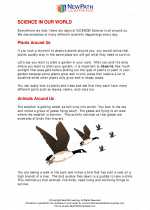 Science in our world - 3rd gr.
Science in our world - 3rd gr.  Worksheet/Answer key
Worksheet/Answer key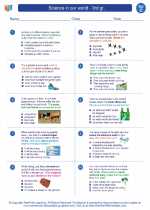 Science in our world - 3rd gr.
Science in our world - 3rd gr.  Worksheet/Answer key
Worksheet/Answer key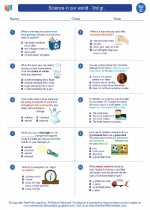 Science in our world - 3rd gr.
Science in our world - 3rd gr.  Worksheet/Answer key
Worksheet/Answer key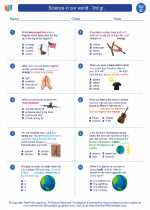 Science in our world - 3rd gr.
Science in our world - 3rd gr.  Worksheet/Answer key
Worksheet/Answer key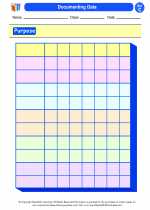 Documenting Data
Documenting Data 

 Worksheet/Answer key
Worksheet/Answer key
 Worksheet/Answer key
Worksheet/Answer key
 Worksheet/Answer key
Worksheet/Answer key
 Worksheet/Answer key
Worksheet/Answer key

The resources above cover the following skills:
History and Nature of Science: A student should understand the history and nature of science. A student who meets the content standard should:
Develop an understanding that historical perspectives of scientific explanations demonstrate that scientific knowledge changes over time, building on prior knowledge.
Develop an understanding that scientific knowledge is ongoing and subject to change as new evidence becomes available through experimental and/or observational confirmation(s).